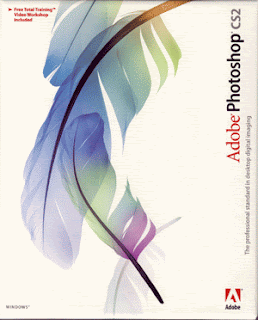 Adobe Photoshop, or simply Photoshop, is a graphics editor developed and published by Adobe Systems. It is the current market leader for commercial bitmap and image manipulation, and is the flagship product of Adobe Systems. It has been described as "an industry standard for graphics professionals." Although originally designed to edit images for paper-based printing, Photoshop can also be used for a wide range of other professional and amateur purposes.
Adobe Photoshop, or simply Photoshop, is a graphics editor developed and published by Adobe Systems. It is the current market leader for commercial bitmap and image manipulation, and is the flagship product of Adobe Systems. It has been described as "an industry standard for graphics professionals." Although originally designed to edit images for paper-based printing, Photoshop can also be used for a wide range of other professional and amateur purposes.The current (10th) iteration of the program, Photoshop CS3, was released on 16 April 2007. "CS" reflects its integration with other Creative Suite products, and the number "3" represents it as the third version released since Adobe re-branded its products under the CS umbrella. Photoshop CS3 features additions such as the ability to apply non-destructive filters, as well as new selection tools named Quick Selection and Refine Edge that make selection more streamlined. On April 30th, Adobe released Photoshop CS3 Extended, which includes all the same features of Adobe Photoshop CS3 with the addition of capabilities for scientific imaging, 3D, and high end film and video users.
Continual revisions were made to the program, with new versions released in the following years. In November 1992, a Microsoft Windows port of version 2.0 of the software was released, and a year later it was ported to the SGI IRIX and Sun Solaris platforms. In September 1994, version 3.0 was released, which introduced layers and tabbed palettes. This version's logo also introduced the "eye" motif seen until version 8.0 of the program. In February 2003, the program shipped with the Camera RAW 1.x plug-in, which allowed the user to import RAW formats from different digital cameras directly into Photoshop.
In October 2004, the program was renamed Adobe Photoshop CS. The name uses the abbreviation CS for products in Adobe Creative Suite. The logo focused around a feather, which was also used in 9.0. The 10th version, Photoshop CS3 was released on April 16, 2007, with an icon modelled after periodic table elements, matching the new icons of other Creative Suite products.
Photoshop is written in the C++ programming language .
Photoshop has strong ties with other Adobe software for media editing, animation, and authoring. Files in Photoshop's native format, .PSD, can be exported to and from Adobe ImageReady, Adobe Illustrator, Adobe Premiere Pro, After Effects, and Adobe Encore DVD to make professional standard DVDs and provide non-linear editing and special effects services, such as backgrounds, textures, and so on, for television, film, and the Web. For example, Photoshop CS broadly supports making menus and buttons for DVDs. For .PSD files exported as a menu or button, it only needs to have layers, nested in layer sets with a cuing format, and Adobe Encore DVD reads them as buttons or menus.
Photoshop can utilize the color models RGB, lab, CMYK, grayscale, binary bitmap, and duotone. Photoshop has the ability to read and write raster and vector image formats such as: .EPS, .PNG, .GIF, .JPEG, Fireworks, etc. It also has several native file formats:
- The .PSD (Photoshop Document) format stores an image with support for most imaging options available in Photoshop. These include layers with masks, color spaces, ICC profiles, transparency, text, alpha channels and spot colors, Clipping paths, and duotone settings. This is in contrast to many other file formats (e.g. .EPS or .GIF) that restrict content to provide streamlined, predictable functionality. Photoshop's popularity means that the .PSD format is widely used, and it is supported to some extent by most competing software.
- The .PSB (Photoshop Big) format is a newer version of .PSD designed for files over 2 gigabytes.
- The .PDD (PhotoDeluxe Document) format is a version of .PSD that only supports the features found in the discontinued PhotoDeluxe software.
Photoshop CS3 is marketed with three main components of improvement over previous versions: "Work more productively, Edit with unrivaled power, and composite with breakthrough tools." New features propagating productivity include streamlined interface, improved Camera Raw, better control over print options, enhanced PDF support, and better management with Adobe Bridge. Editing tools new to CS3 are the Clone Source palette and nondestructive Smart Filters, and other features such as the Channel Mixer and Vanishing Point were enhanced. Compositing is assisted with Photoshop's new Quick Selection and Refine Edge tools and improved image stitching technology.
CS3 Extended contains all features of CS3 plus tools for editing and importing some 3D graphics file formats, enhancing video, and comprehensive image analysis tools, utilizing MATLAB integration and DICOM file support.


No comments:
Post a Comment